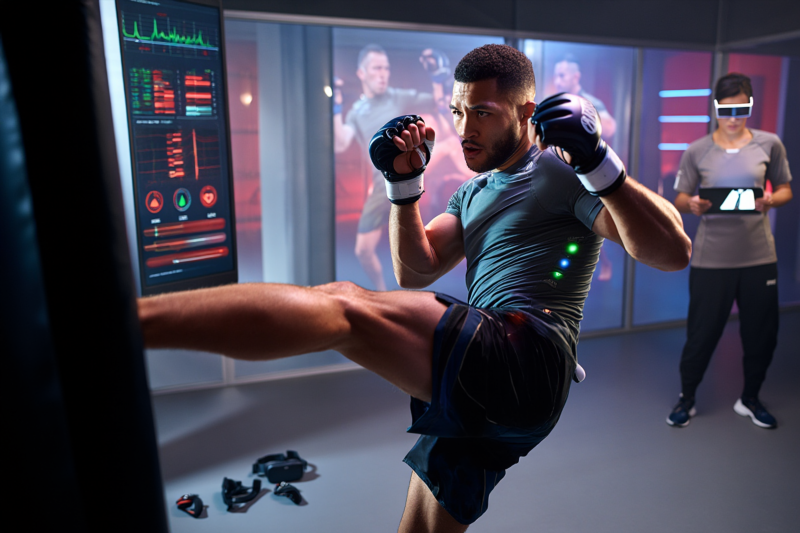
Evolution of MMA Training How Technology Boosts Fighter Success
Mixed Martial Arts (MMA) has evolved dramatically over the past few decades, blending combat disciplines with cutting-edge technology to elevate fighter performance and safety. Today’s MMA landscape is shaped by innovative training methods, data-driven insights, and advanced tools that help athletes reach new heights. Whether you’re an aspiring fighter or a dedicated fan, understanding how technology transforms MMA training offers valuable insights into the future of martial arts. This article explores the evolution of MMA training and how modern innovations are revolutionizing fighter preparedness, resulting in superior performance and safer fights.
The Historical Shift in MMA Training
From Traditional to Tech-Integrated Training
Initially, MMA fighters relied on raw physical effort, coach-led drills, and sparring sessions. While foundational, these methods lack precise measurement and personalized feedback. The recent shift toward technology integration has introduced data analytics, biomechanics, and virtual simulations, enabling more targeted and efficient training.
Key Milestones in MMA Training Evolution
- Early days: Focus on intense sparring and conditioning.
- 2000s: Introduction of specialized strength and conditioning programs.
- Recent years: Adoption of wearable tech, video analysis, and virtual reality.
How Modern Technologies Are Enhancing MMA Performance
Wearable Devices and Sensors
Wearables like heart rate monitors, GPS trackers, and motion sensors provide real-time data on athlete performance. These devices help trainers tailor workouts, optimize recovery, and prevent injuries.
Benefits of Wearable Tech:
- Accurate tracking of physical exertion
- Monitoring of biomechanical movements
- Injury risk assessment and management
Video Analysis and Fight Breakdown Tools
High-definition cameras combined with AI-powered analysis software facilitate detailed review of fighters’ techniques and opponents’ strategies.
Advantages:
- Identifies technical strengths and weaknesses
- Enhances tactical decision-making
- Accelerates skill development through targeted drills
Virtual Reality (VR) and Simulation Training
VR systems simulate fight scenarios, allowing fighters to practice reactions, tactics, and decision-making in a controlled environment.
Impact:
- Safe environment for trial and error
- Improved spatial awareness
- Increased mental toughness
Data Analytics and Performance Metrics
Data-driven training uses machine learning algorithms to analyze vast amounts of performance data, predicting outcomes and tailoring training programs.
Key Outcomes:
- Personalized training regimens
- Enhanced understanding of individual recovery needs
- Objective performance benchmarks
Transforming Fighter Preparedness
Advantages of Technological Integration
- Precision and Personalization: Custom training based on detailed analytics.
- Injury Prevention: Early detection of overtraining or biomechanical issues.
- Faster Progression: Data-driven feedback accelerates skill acquisition.
- Enhanced Recovery: Wearables monitor fatigue, guiding rest periods.
Challenges and Future Trends
Despite these advances, challenges include accessibility, cost, and the need for technical literacy among fighters and coaches. Looking ahead, emerging trends like AI-powered coaching, biometric implants, and augmented reality promise to further refine MMA training.
The Impact on the MMA Ecosystem
For Athletes
Modern tools empower fighters to maximize their potential, extend their careers, and maintain peak physical condition throughout training cycles.
For Coaches
Tech innovations offer deeper insights into fighter behavior, enabling more strategic and effective coaching methods.
For Fans and Enthusiasts
The evolution enhances fight analysis, making MMA competitions more exciting and informative.
Frequently Asked Questions
How does technology improve MMA fighter performance?
By providing precise data on movement, strength, endurance, and recovery, technology allows fighters to optimize their training, reduce injuries, and refine techniques efficiently.
Are these technological tools accessible to amateur fighters?
While high-end equipment may be costly, many affordable tools like smartphone apps, basic wearables, and online platforms make technological benefits accessible at various levels.
What are the ethical considerations in using technology in MMA training?
Images and data privacy are paramount; transparency and consent are critical when deploying biometric data collection and analysis tools.
The transformation of MMA training through technology represents a significant leap forward in fighter readiness and performance optimization. From wearable sensors to virtual reality, every innovation offers fighters an edge—enhancing skills, safety, and competitive longevity. Staying ahead of these trends is essential for athletes and coaches committed to excellence in the martial arts arena.
Ready to elevate your MMA training? Explore the latest technological tools and integrate them into your regimen today—experience the difference that innovation makes.
*Unlock the full potential of MMA training with expert insights and cutting-edge tools. Whether you’re climbing the ranks or simply passionate about the sport, understanding these technological advancements ensures you’re always a step ahead.*